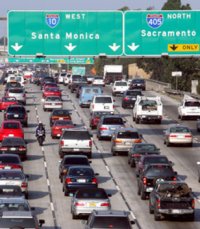 There’s more evidence that change is in the air, when it comes to car ownership in America.
There’s more evidence that change is in the air, when it comes to car ownership in America.
The University of Michigan Transportation Research Institute (UMTRI) just released two studies on the issues. One study showed by that the rate of vehicle ownership on a per-person, per-household, and per-licensed driver basis peaked in 2006 prior to the Great Recession. Another UMTRI study found that there’s been a significant decline in vehicle miles traveled – those numbers peaked in 2004.
The studies have found change is due to increased telecommuting, higher use of public transportation, greater urbanization, and changes in the ages of drivers. A big one is Gen-Y/Millenials losing interest in drivers; only 28% of 16-year-olds had driver’s licenses in 2010, compared with 44% in 1980, according to UMTRI. Miles driven by young people 16-to-34 years old also dropped quite a bit – 23% between 2001 and 2009. Older drivers also play into it – they make up the majority of drivers on American roads and are tending to drive shorter distances.
Expanded transit systems and bike-share networks are also playing into less miles driven behind the wheel. Bicycle commuting in the US grew by 47% between 2000 and 2011, and at much higher levels in a few bike-friendly cities.
As recently reported in Green Auto Market, Southern California is once again the bellwether of changes in transportation trends.
- Light rail has been expanded 26% in the past eight years. Bike lane networks have doubled to 292 miles. Bus and train ridership is growing – up nearly 5% in May 2013 versus May 2011.
- Even more significant – the total number of passenger cars has declined in Los Angeles. The market rebounded from the recession, but the 2012 sales numbers were 28,000 less than five years earlier.
Transportation alternatives, sometimes called Smart Transportation, are gaining a lot more interest in sprawling urban environments. It’s tied to consumer interest in…..
- Carsharing, vanpooling, and group transportation modes.
- Alternative vehicle technologies including plug-ins, hybrids, and alternative fuels.
- Bike lanes and safety gear for bicyclists.
- Light rail and busing.
- Living closer to work and retail stores with more foot traffic – and less annoyance with finding parking spaces and being charged fees for them. Plus more telecommuting through the latest technologies.
- Eventually, advanced vehicle technologies are expected to play a larger role in the solution through autonomous vehicles that can park themselves and eventually driverless cars. Safety, reduced traffic congestion, and cleaner air are typically cited reasons for moving forward in these breakthroughs.



